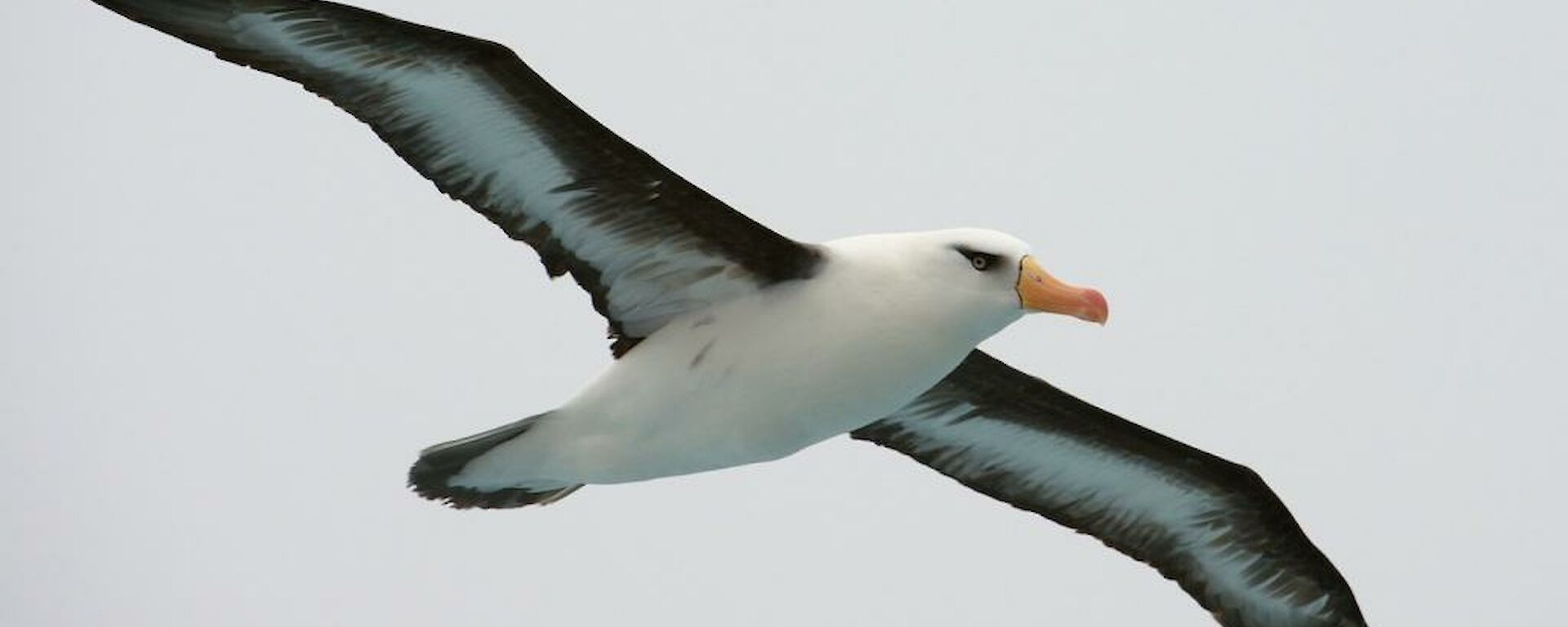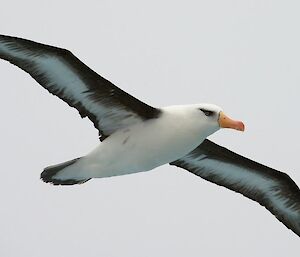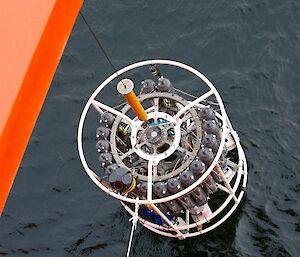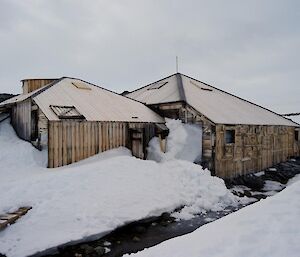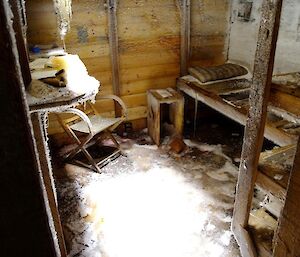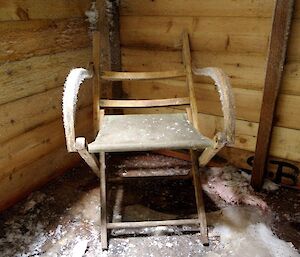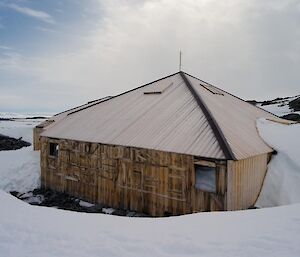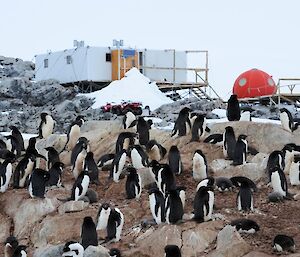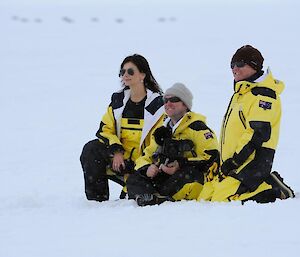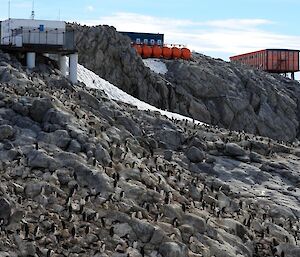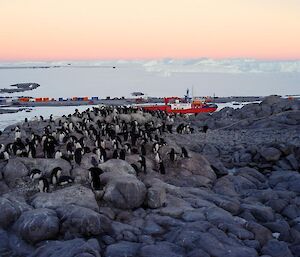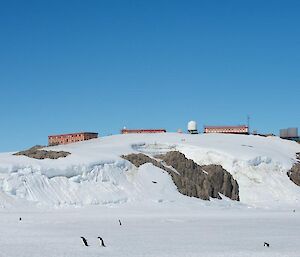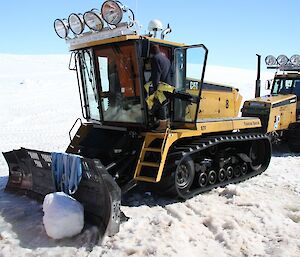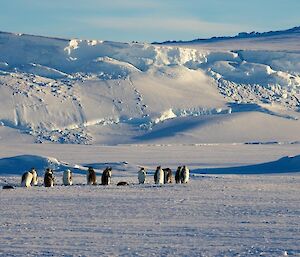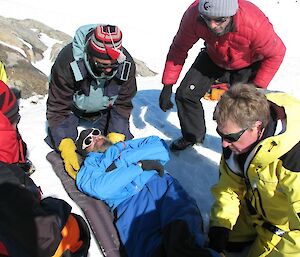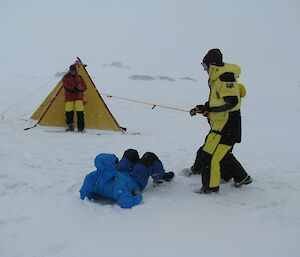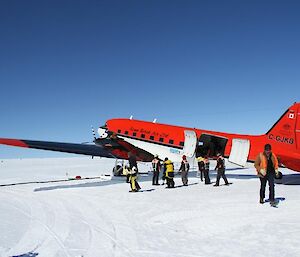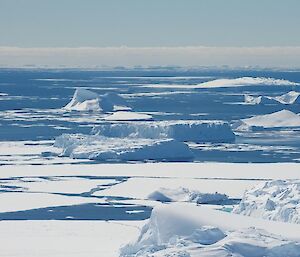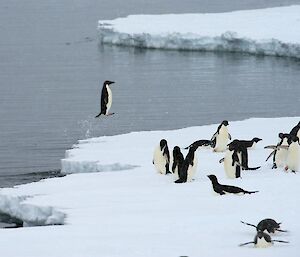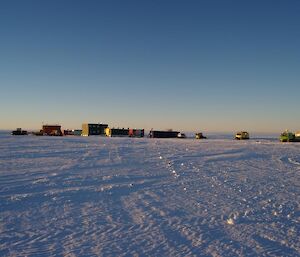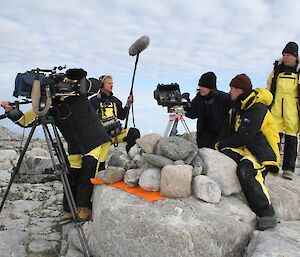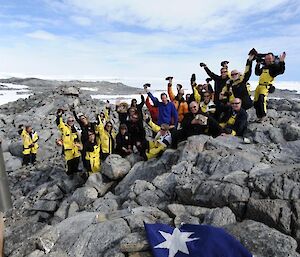I’m coming to the end of my first trip south with the Australian Antarctic Division. It has been an enormous privilege and I thank everyone who has helped me. Many people, including Don Hudspeth, did a lot of work to ensure that I got the most out of my time. I will come away from this trip with a far better understanding of the Division and the significance of the work we do in Antarctica and the Southern Ocean.
It was great to start the trip south on the Aurora Australis. When the sea sickness passed I was able to start appreciating the joys of travelling on the Southern Ocean. The photo below is of the Black-browed albatross that travelled with us for a time.
King Neptune visited many of us, showering us with all sorts of gifts?! I’ve not included photos as they are just too appalling!
The ship’s crew and our operations staff went out of their way to show me how the AA operates and its importance to Australia’s presence in Antarctica. I would particularly like to thank the ship’s Master Murray Doyle, Voyage Leader Robb Clifton and Deputy Voyage Leader Barb Frankel, who went to great lengths to ensure that I had a successful voyage.
Voyage 3 was not just about the Mawson Centenary commemorations, there was also a huge program of marine science. It was entirely appropriate that the Centenary celebrations were part of a science voyage as Mawson was first and foremost a scientist and the Australasian Antarctic Expedition was the most comprehensive scientific expedition of any in the ‘heroic era’ of exploration.
It was amazing to be part of the Centenary celebrations at Commonwealth Bay. It reminded us all how much those early expeditioners endured in the pursuit of science. The inside of Mawson’s hut was just as they left it all those years ago and being there brought to life all the stories about Mawson and his men. We also visited the memorial cross for Ninnis and Mertz. It is a sobering reminder of how treacherous Antarctica can be. Luckily for us, on the day of the ceremony there was barely enough wind to fly the Australian flag.
I spent a night at Sorensen’s Hut in Commonwealth Bay and was able to take in the extraordinary landscape.
‘Stay’ (the guide dog donation box and former Davis station mascot) hitched a ride with us and is now wintering at Commonwealth Bay, keeping a lonely vigil at Sorensen Hut to mark the Centenary.
The ABC, AAP and our own communications team (thanks to Sally, Nisha and Patti) worked overtime to bring our Antarctic Centenary celebrations back to the public in Australia. We got some good press at a time when our work in Antarctica needs to have a positive profile. We couldn’t have asked for better coverage.
The next stop on my journey was Dumont d’Urville, supposedly for a quick change over to the Basler for the flight on to Casey. Ten days later we were still there — that’s Antarctic weather for you! While it was frustrating not to be at Casey, DDU is a wonderful Antarctic base to be stranded in. The station is built on an Adelie penguin colony and their noise (and unique aroma) is a constant part of the background. The station leader Arnaud, the operations manager Patrice, and all of the French expeditioners made us feel very much at home.
As part of the stay at DDU, we visited Cape Prud Homme, which houses the French traverse operation. They regularly traverse between DDU and Concordia, the inland base they share with Italy. The French have built an impressive traverse capability, with much of the equipment being engineered in Tasmania.
We also visited the emperor penguin chicks at the colony nearby DDU.
The group of stranded Australians and some eager French expeditioners did some survival training at DDU, under Psycho’s watchful eye!
After 10 days we were able to fly on to Casey. It was an amazing flight in clear conditions along a coastline scattered with huge icebergs. Colin and Louise (our seabird ecologists) were able to survey the islands along our route for Adelie penguin colonies.
I’ve now had ten days here at Casey. Mark Hunt, Hully and all of the operations team have worked overtime to make sure that I have a good appreciation of how the station works. I apologise for the many dumb questions that I asked — you have all been very patient.
I was able to tag along with some of the scientific groups; counting Adelie penguins, looking for invertebrates in marine sediments, remediating contaminated sites to name just of the few of the projects that I observed.
One day we arrived at Peterson’s melon to find that it had been blown apart by a blizzard around the time of the Casey resupply. Bits and pieces of the melon were flung at least a kilometre away from its foundations. Another reminder, if any was needed, about the strength of the winds in Antarctica.
I also spent a night at Wilkins. Micky and his crew let me think I was being useful ‘helping’ them to prepare the runway for an A319 flight! The ice runway is a work of art but it is also the product of a huge amount of work. They were up at midnight to start preparing for the A319 that arrived about 11 hours later. All the passengers said the landing was incredibly smooth.
That A319 flight bought a crew from 60 Minutes, who have spent the week documenting life at Casey and the science programs that we undertake from this station.
Sadly, because of the delays on this trip I wasn’t able to travel on to Davis and Mawson this trip. Hopefully I will get to those stations next spring/summer.
I’m now packing for the next A319 flight to Hobart. It was to leave on Tuesday, but weather has intervened and its now due on Wednesday. My office desk awaits me back in Australia, so I’m praying to the weather gods…!
Tony Fleming

